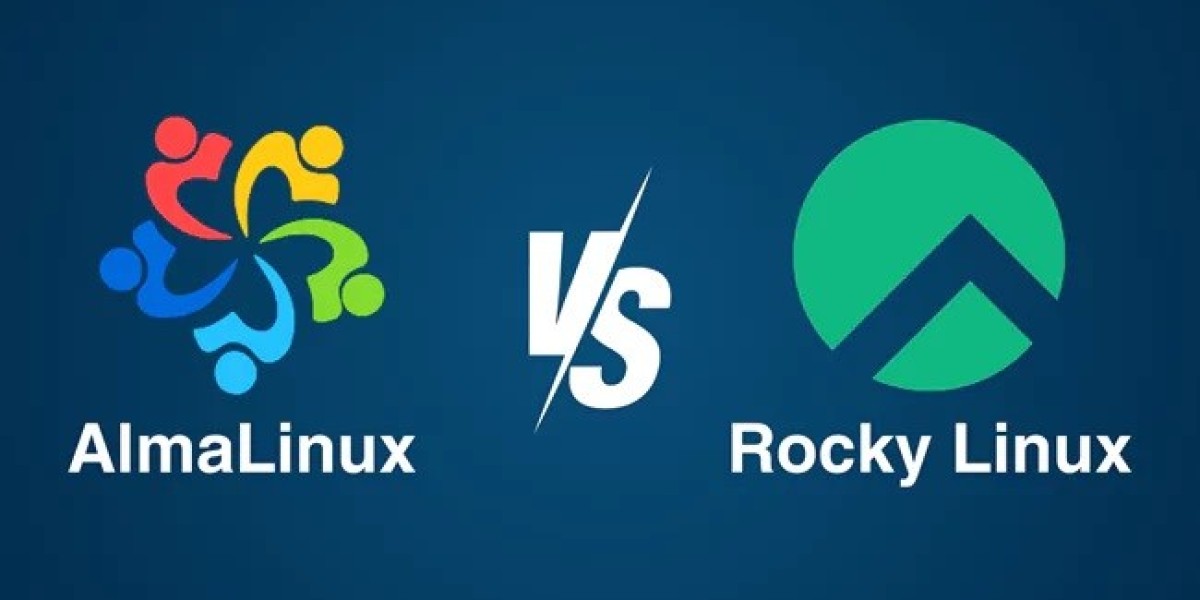With the transition of CentOS to CentOS Stream, many users have been on the lookout for a stable, reliable alternative. Two prominent contenders have emerged: AlmaLinux and Rocky Linux. Both provide RHEL (Red Hat Enterprise Linux) compatibility, but each comes with unique advantages and development models. In this article, we’ll compare AlmaLinux vs Rocky Linux, exploring their differences, similarities, and what makes each a strong candidate for replacing CentOS in your system.
The Origins of AlmaLinux and Rocky Linux
Both AlmaLinux and Rocky Linux were created in direct response to Red Hat’s shift from CentOS to CentOS Stream, a move that left many users and enterprises searching for a suitable RHEL-compatible replacement.
AlmaLinux is an open-source project launched by CloudLinux, a company known for providing commercial Linux distributions. Built to be a 1:1 RHEL-compatible fork, AlmaLinux aims to provide a stable, production-ready solution for users and businesses needing a quick, dependable replacement for CentOS.
Rocky Linux, founded by Gregory Kurtzer, one of the original creators of CentOS, seeks to continue the community-driven ethos that CentOS represented. Named in honor of Rocky McGaugh, a co-founder of CentOS, Rocky Linux promises to maintain the transparency and user-focused development model that users valued in CentOS.
Development Models: AlmaLinux vs Rocky Linux
A key distinction between AlmaLinux vs Rocky Linux lies in their development approaches.
AlmaLinux benefits from CloudLinux’s commercial backing, which brings professional support, development resources, and a structured release schedule. While the project is still community-driven, the commercial involvement ensures quick updates, reliable patching, and the infrastructure needed for long-term sustainability. This makes AlmaLinux particularly attractive to enterprises that need a robust, reliable operating system with strong RHEL compatibility and professional support options.
Rocky Linux, in contrast, is entirely community-led. Every aspect of its development, from updates to features, is driven by its user base. The Rocky Linux Foundation ensures the project stays free, open-source, and transparent, appealing to users who value open-source software with no corporate ties. Rocky Linux embodies the original spirit of CentOS as a community-powered distribution, and the strong Rocky Linux community is dedicated to keeping the project aligned with user needs.
Stability and Performance
Both AlmaLinux and Rocky Linux deliver RHEL-compatible performance and stability, making them reliable choices for server environments, enterprise workloads, and development systems.
With CloudLinux backing, AlmaLinux benefits from professional resources, resulting in faster updates and timely security patches. This makes it ideal for businesses that prioritize stability and fast responses to vulnerabilities.
On the other hand, Rocky Linux has maintained a consistent release schedule despite its community-driven model. The active Rocky Linux community ensures that updates and patches are provided quickly and reliably, making it equally dependable for users who prefer a more decentralized development approach.
Migration and Support
Migrating from CentOS to either AlmaLinux or Rocky Linux is made simple through well-documented tools that ensure a smooth transition with minimal downtime.
AlmaLinux offers the additional benefit of commercial support options, thanks to CloudLinux. This makes it especially appealing to enterprises that need guaranteed support, service-level agreements (SLAs), and a reliable point of contact for technical issues.
While Rocky Linux doesn’t offer paid support, it boasts an active and passionate community. Users can find plenty of help through community forums, documentation, and online resources, making Rocky Linux a strong choice for those who prefer a community-driven support model.
Long-Term Sustainability: AlmaLinux or Rocky Linux?
When it comes to long-term viability, both AlmaLinux and Rocky Linux show promising potential.
AlmaLinux has the advantage of CloudLinux’s financial and technical backing, ensuring that the project will continue to receive regular updates and security patches over time. This makes it a safe choice for users and enterprises looking for long-term stability.
Rocky Linux, while community-driven, is powered by a dedicated user base and has proven to be just as sustainable. The Rocky Linux Foundation is committed to maintaining a reliable, open-source alternative to CentOS, making Rocky Linux a viable option for users who prefer community-driven projects.
Conclusion:
For businesses and users who require enterprise-grade support and commercial stability, AlmaLinux is likely the better option. Its CloudLinux backing ensures rapid updates, long-term viability, and professional support, making it a dependable solution for mission-critical environments.










